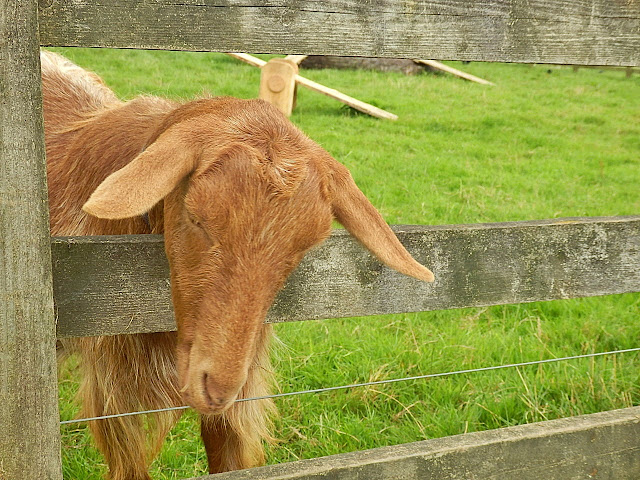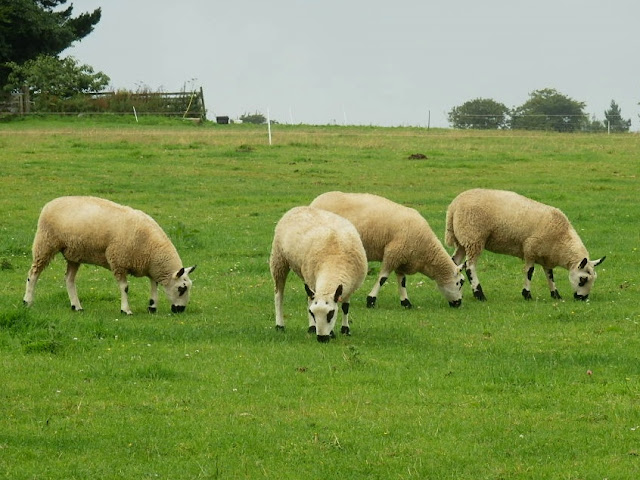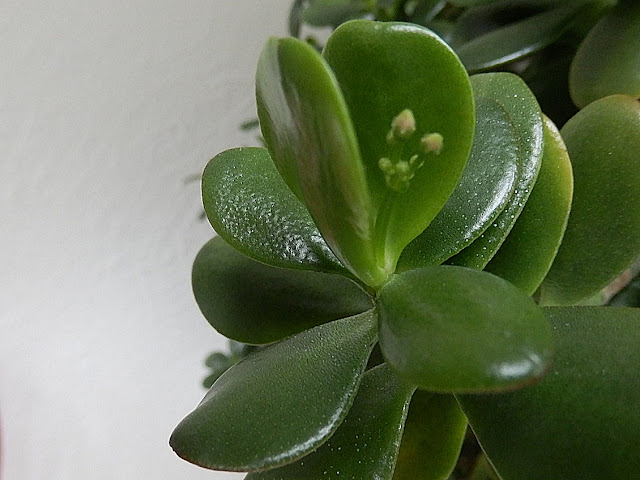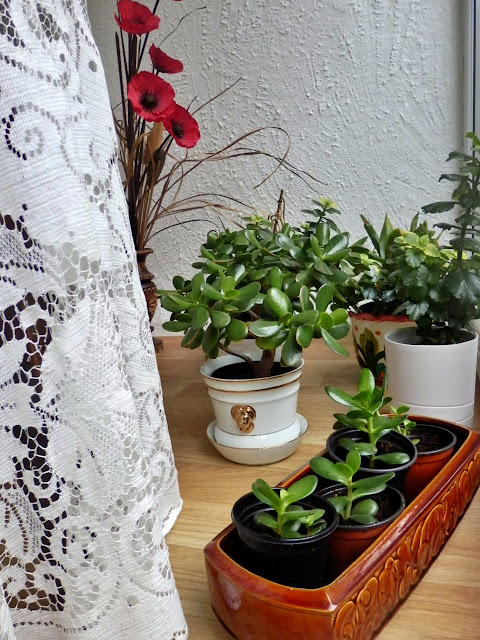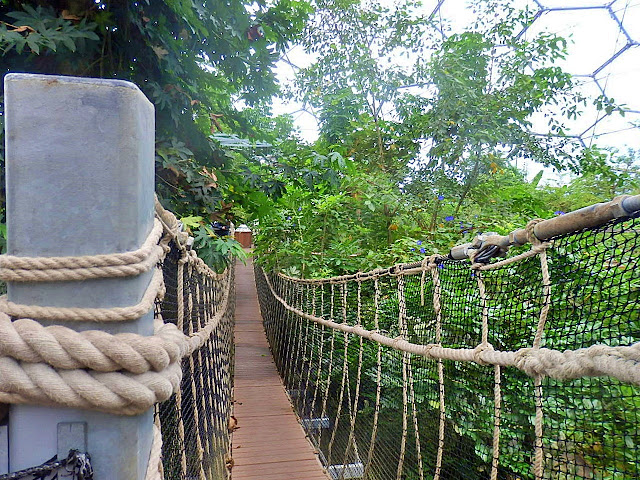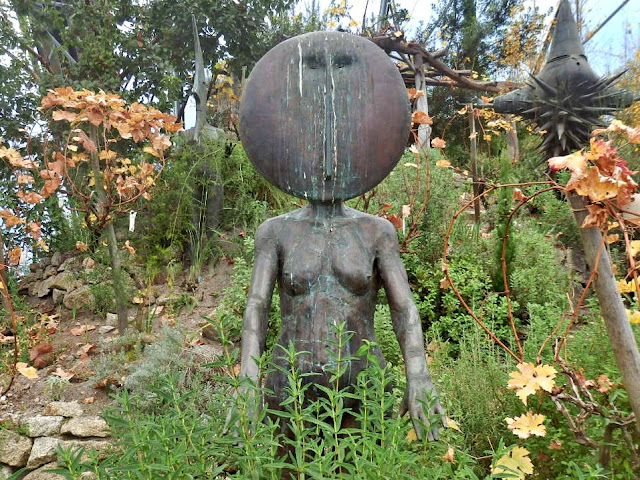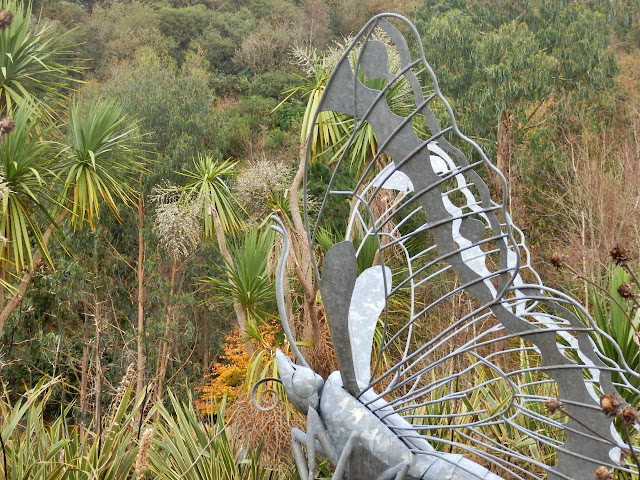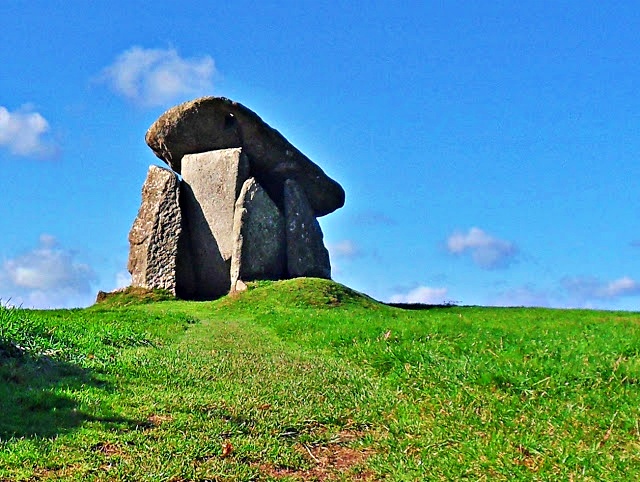Thursday, 28 November 2019
Farm Animals Seen In Cornwall
At the time of writing we have had, what seems like, weeks of continuous rain. This has limited me getting out and about as much as usual. Today's post, therefore, is of farm animals seen in Cornwall over the year.
The photo above almost looks like a still life. The animals posed quite peacefully. More than can be said with the cattle seen in north Cornwall, below, they seemed to want to get away from me as quickly as possible.
The pale coloured animal (below) is a White Park cattle breed which have been kept in Britain for over 2,000 years. They are closely descended from Britain's original wild white cattle.
In 1973 there were only 60 breeding females but with the help of the Rare Breed Survival Trust there are now 750 breeding females.
The large horned lady is a Highland Cattle Breed. These spread from the west of Scotland to the far corners of Britain including Cornwall.
Next we have a friendly goat who liked being stroked ...
… and a cute lamb who was a little wary of my camera - but we made friends!
More sheep ...
… and even more sheep - zzzz zzzz zzzz!
Oh and also a turkey as Christmas is approaching - though I'm vegetarian!
As with the first photo of this post it does seem that some cows and cattle in Cornwall have lovely views and surroundings while they chew the cud.
The cow to the left, on the next photo, did her best to smile as I requested.
Another view and that's it for today.
P.S. Nearly forgot the pigs!
Monday, 25 November 2019
The Jade Money Plant Attracts Money!
This is our money plant or jade plant (crassula ovata) which sits in our front porch attracting money into our house - well that's the theory!
What made me write about this today is because I noticed a few flowers are developing, and that is indeed a very auspicious happening. Money will now supposedly be in full flow according to the world of Feng Shui.
Our plant is over 30 years old. I remember buying the plant when my son was small. My wife had to go to Germany, as her mother was seriously ill. My son and I decided to buy this particular plant as a small gift on her return. It was then about five inches tall.
Over the years the plant has thrived, all we have really done is to buy bigger and bigger pots for the money plant.
We are also spreading the 'flow of money' to relations and friends by giving them small cuttings of the crassula ovata. Perhaps I should really say my wife does this. She has another four or five small versions ready to give away, as can be seen below.
You may well have seen these plants in Chinese restaurants and take-aways. They supposedly attract happy, paying customers.
Also in our front porch is a Christmas cacti (Schlumbergera bridgessii) which is now beginning to flower - unfortunately a little too early for Christmas.
The Christmas Cacti was originally from Brazil.
Oh well, better finish the post now and see how much money our money plant has attracted today ... shouldn't take me too long!
Friday, 22 November 2019
Beautiful Views of the Fowey Estuary, Cornwall
A long time ago, while waiting to move into our present home, there was some sort of a problem with the seller. This took about a month to be sorted, so in the meantime, we stayed in a small cottage in Fowey. Since then Fowey, and especially the River Estuary, has been one of my favourite places to visit.
There are such lovely views looking down from the footpath. The photo at the top of this post shows the river meeting the sea, with the village of Polruan on the left and the red and white Gribbin tower - a daymark - on the skyline.
The tower can also be seen on the heading of this blog
The small boat, to the left of the photo below, is the ferry which runs from Fowey to Polruan.
And finally a small helicopter lands in the grounds of the Fowey Hotel.
The name Fowey - pronounced Foy - is from the Cornish language word Fowydh meaning Beech Trees.
Tuesday, 19 November 2019
Cornwall's Eden Project With The world's Largest Indoor Rainforest - Plus Much More
Today we are at Cornwall's Eden Project on a damp November day - but still some colour to be found, especially in the huge biomes.
We started at the Rainforest Biome which is the world's largest indoor rainforest.
Being winter the rainforest isn't quite as hot inside as usual - but is still a comfortable, warm temperature.
Colourful plants linger on.
And below a few of the Rainforest residents.
A waterfall cuts a way from the very top of the Rainforest Biome.
Once up high in the biome there is a canopy walkway (rope bridge) where you can walk among the treetops.
But everything isn't up high. Below are small fungi growing on the base of an old tree.
A few flowers trying to hide away at ground level.
Now a few pics around the Eden Project's Mediterranean Biome. It can be surprising what's inside. I'll leave you to work out what the photo below is all about!
I know I said we are now in the Mediterranean Biome but there are also plants and flowers from other parts of the world - like the Australian Grass Tree (Xanthorrhoea), for example, in the photo below.
This is treasured by Aborigine people as it provides Bush Tucker high protein snacks known as witchetty grubs - often seen and mentioned on the UK television series I'm a celebrity get me out of here.
Once the Grass Tree has died the grubs are harvested as a food source.
And now a temporary display in the Mediterranean Biome from - Africa! This is the CAMFED Garden.
The 'campaign for female education' believes that when girls are educated they can lift communities out of poverty.
It supports girls in rural Africa, enabling them to stay in education, develop businesses, create jobs and deliver prosperity.
CAMFED's aim is to support another 1,000 women led agricultural businesses across rural Africa within one year.
And moving on, a blackbird playing peek-a-boo inside the Mediterranean Biome.
Outside now with a close up of how the Biomes are designed.
See also:
(1) A Flavour Of Cornwall's Eden Project: 15 Photos
(2) More Flavour of Cornwall's Eden Project - 14 Photos
Saturday, 16 November 2019
The Golitha Falls on the Fowey River and Other Nearby Interesting Places to Visit
We stopped for a brief while at Golitha Falls, which is part of the Fowey River, Cornwall. The falls are always fast moving as they descend some 300 feet.
The Draynes Bridge, above, was built back in 1876, and is made of local granite stone.
There is a story that the last King of Cornwall, Doniert, drowned in the river in the year 875.
King Doniert's Stone is nearby, see my post: The Ancient Stone, Over 1100 Years Old, Known As King Doniert's Stone
Also nearby are the Three Hurlers Ancient Stone Circles on Bodmin Moor.
And, nearly forgot, the Jamaica Inn, as featured in Daphne Du Maurier's book of the same name, is also within easy reach from the falls.
The Golitha Falls are managed by Natural England and this is described as a site of Special Scientific Interest. It is claimed that there are over 98 rare mosses to be found here and 50 species of liverwort.
Draynes woods, through which the falls flow, is an ancient woodland of oaks and hazel coppices. All in all it's an interesting spot to visit and has some marked walks.
The Golitha Falls are 3 miles north-west of Liskeard and 1.2 miles west of St.Cleer. At St.Cleer you will also find the 5000 Years Old Mysterious Trevethy Quoit - photo below taken in the summer!
Wednesday, 13 November 2019
The Witch Tamsin and a Story of Witchcraft
Living in Cornwall there are many legends and stories of witchcraft. One of the most famous of Cornish witches was Tamsin Blight (1798-1856) the lady in the photo above. She was also known as Tammy Blee or the White Witch of Helston.
Blight commenced her craft around 1830. She soon built a reputation of being able to remove spells, which had been cast by other witches. People, especially farmers, would consult her for cures for their animals or themselves.
One of the most quoted stories about her is known as The Ghost of Stythians. This is where she attempted to conjure up the spirit of an old woman in St. Stythians graveyard. This was carried out to discover where a large sum of cash was hidden, by the deceased, that a relative claimed was rightfully his.
Following is a description of her actions as described in an 1870 book, Traditions and Hearthside Stories of West Cornwall. The author was William Bottrell.
She marked out a circle by drawing her staff on the ground three times round the man, at the same time mumbling her unknown tongue.
This done, she said, "Now mind, for your life, that you don't move out of this charmed ring which I have made to protect ye, and if you are still determined I will now begin and summon the spirit."
The witch, holding out her staff towards the spot where the old woman was buried, began her incantation, or citation, with long, strange words, slowly pronounced. Then she continued in a louder tone, "Spirit of Jane Hendy, in the name of all the powers above and below, I summon thee to arise from thy grave and to appear before me and this man! By the spirits of fire, air, earth, and water, I summon thee to arise! Come hither, appear, and speak to this man! Come!"
This she said three times, rising her voice at each repetition until it ended in a shriek.
The witch paused. All was silent for a moment, and then were heard, most fearful, because unusual, sounds, which more than any other earthly noise resembled the crashing or rending of wood and stones, mingled with painful moans, groans, and shrieks, which seemed to come from the old woman's grave. The witch, stretching out her arms, her red cloak and grey hair streaming back on the wind, pointed with her staff towards the place whence these frightful sounds proceeded, and said, "Behold, it cometh; be thou prepared!"
The book mentioned is available to be read on the Internet for free here.
Blight commenced her craft around 1830. She soon built a reputation of being able to remove spells, which had been cast by other witches. People, especially farmers, would consult her for cures for their animals or themselves.
One of the most quoted stories about her is known as The Ghost of Stythians. This is where she attempted to conjure up the spirit of an old woman in St. Stythians graveyard. This was carried out to discover where a large sum of cash was hidden, by the deceased, that a relative claimed was rightfully his.
Following is a description of her actions as described in an 1870 book, Traditions and Hearthside Stories of West Cornwall. The author was William Bottrell.
 |
| Stithians / Stythians Church, Cornwall |
She marked out a circle by drawing her staff on the ground three times round the man, at the same time mumbling her unknown tongue.
This done, she said, "Now mind, for your life, that you don't move out of this charmed ring which I have made to protect ye, and if you are still determined I will now begin and summon the spirit."
The witch, holding out her staff towards the spot where the old woman was buried, began her incantation, or citation, with long, strange words, slowly pronounced. Then she continued in a louder tone, "Spirit of Jane Hendy, in the name of all the powers above and below, I summon thee to arise from thy grave and to appear before me and this man! By the spirits of fire, air, earth, and water, I summon thee to arise! Come hither, appear, and speak to this man! Come!"
This she said three times, rising her voice at each repetition until it ended in a shriek.
The witch paused. All was silent for a moment, and then were heard, most fearful, because unusual, sounds, which more than any other earthly noise resembled the crashing or rending of wood and stones, mingled with painful moans, groans, and shrieks, which seemed to come from the old woman's grave. The witch, stretching out her arms, her red cloak and grey hair streaming back on the wind, pointed with her staff towards the place whence these frightful sounds proceeded, and said, "Behold, it cometh; be thou prepared!"
The book mentioned is available to be read on the Internet for free here.
Sunday, 10 November 2019
The Church at Veryan, Cornwall: St. Symphorian
A while back I wrote a post about the round Cottages At Veryan, Cornwall - Built To Keep The Devil Away but I didn't mention the village church. So today's post is on Veryan's St. Symphorian church.
The first thing we did was to look at the visitors book and found it amusing that the previous three surnames were Black, White and Brown!
The church dates back to at least the 13th century but it is generally believed that a church has been on this spot for much longer than this. The village itself was mentioned in the Domesday Book of 1086 but was then called Elerchi - which is derived from the Cornish language meaning 'swan'.
The font is of a Norman design but may be a medieval copy.
The font has a carved head on each corner.
The photo below shows some of the impressive roof timbers, many of the carved rafters are thought to be part of the original roof.
The Veryan church adopted St. Symphorian as its patron back in 1281.
According to legend St. Symphorian studied at Autun in France but got into a bit of bother. It seems that he fell out with the local governor, Heraclius, as he refused to worship the pagan goddess Cybele and even tried to destroy the goddess's statue. He was arrested and flogged but stuck to his principles and was finally beheaded on the 22nd of August in the year 178. The date is celebrated every year as St. Symphorian's feast day.
The photo above is of the village stocks resting against the church outside wall. This is how they would have been used ...
Near to the church is a village pond, probably an old mill pond. From here it's possible to walk across country to Cornwall's coast.

Subscribe to:
Posts (Atom)
FEATURED POST
Cornwall's Lizard Peninsula
I know my wife and I and live in Cornwall but we had a break away from home on Cornwall's L izard Peninsula - one of our favourit...






